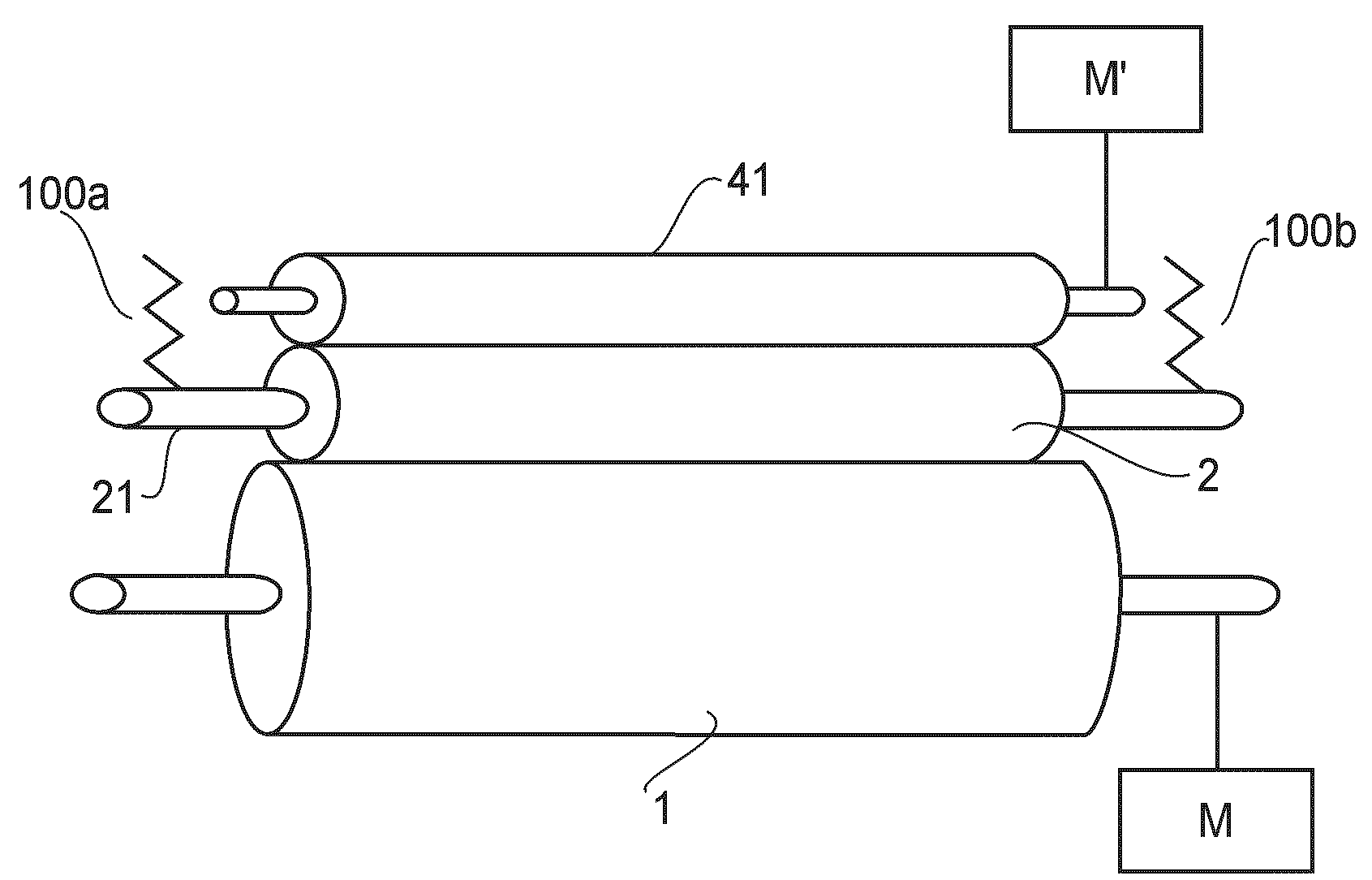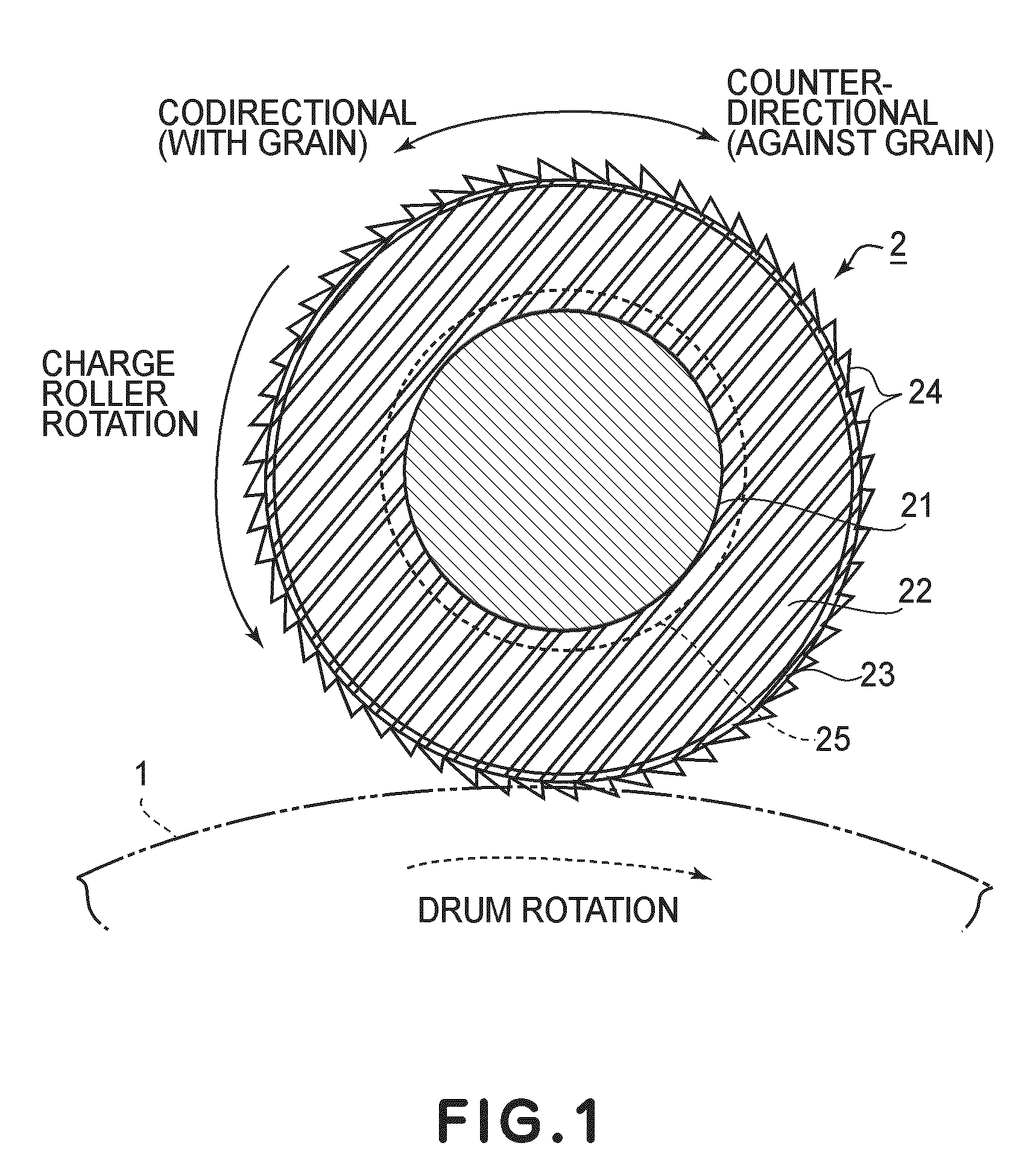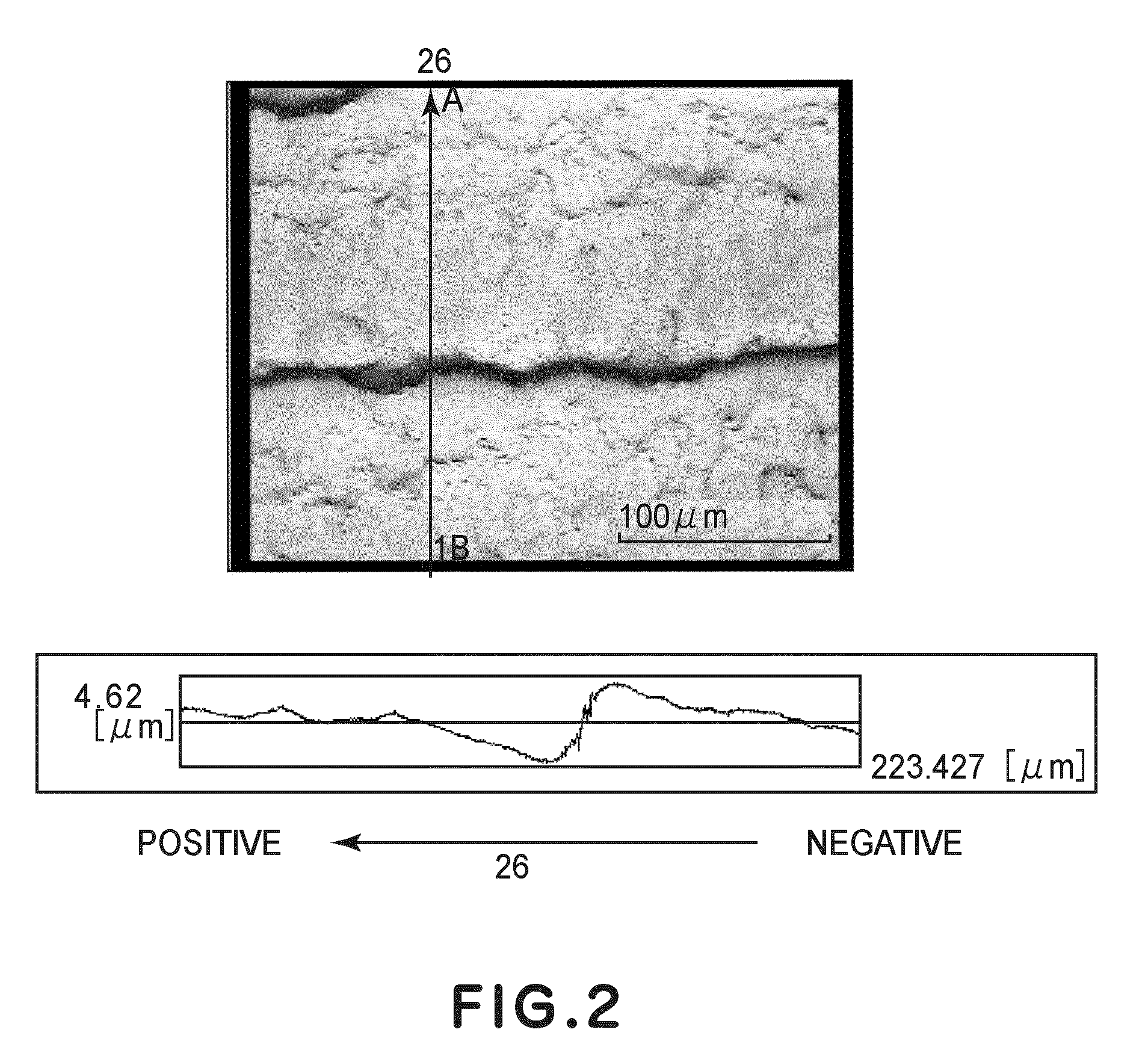Charging device
- Summary
- Abstract
- Description
- Claims
- Application Information
AI Technical Summary
Benefits of technology
Problems solved by technology
Method used
Image
Examples
experimental example 1
1) Preparation of Charging Roller 2
[0154]A rubber composition was prepared by using the following ingredients as materials for forming the electroconductive elastic layer 22.
Epichlorohydrin rubber100wt. partsLiquid polychloroprene6wt. partsThiourea compound2wt. partsSulfur0.3wt. part
[0155]After an adhesive was applied onto an outer peripheral surface of a core metal (rotatable shaft) 11 consisting of a metal shaft having a diameter of 8 mm, the core metal 11 was set in a metal mold for forming a roller and kept at 70° C. Into the metal mold, the above-prepared rubber composition was injected, followed by reaction and curing for about 10 minutes to obtain the electroconductive elastic layer 22 as a base material for the charging roller 2. The resultant roller structure was removed from the metal mold and aged for about 24 hours at room temperature. A diameter of the roller structure was 15 mm. This roller structure was subjected to surface polishing by a polishing machine to obtain a...
experimental example 2
1) Preparation of Charging Roller 2
[0177]The charging roller 2 prepared in Experimental Example 1 was, after being polished, subjected to surface treatment with the following surface treating liquid.
[0178]The surface treating liquid was prepared by dispersing and mixing the following ingredients in a ball mill for 3 hours.
Ethyl acetate100wt. partsIsocyanate compound20wt. partsAcethylene black5wt. partsAcrylicsilicone polymer1wt. part
[0179]While this surface treating liquid was kept at 23° C., the charging roller 2 prepared in Experimental Example 1 was dipped in the surface treating liquid for 10 seconds and heated for 1 hour in an oven kept at 120° C. to prepare a charging roller 2 treated with the surface treating liquid.
[0180]This charging roller 2 was provided with grain of polish trace 24 having a surface roughness (Rz) of 8 μm, a stepped portion length (height) 36 of 7 μm, a width 35 of the grain of polish trace 24 of 170 μm, θ1 of 70 degrees, and θ2 of 2 degrees.
2) Preparatio...
experimental example 3
1) Preparation of Charging Roller 2
[0186]With respect to the charging roller 2 prepared in Experimental Example 1, the ingredients for a rubber portion (electroconductive elastic layer 22) were changed to those shown below.
Polyurethane polymer100wt. partsLithium perchlorate1wt. partsDibutyltin dilaurate0.01wt. partElectroconductive carbon (Electroconductive agent)25wt. partsDicumyl peroxide (Cross-linking agent)0.5wt. part
[0187]These ingredients were caused to react with 4,4′-diphenylmethane diisocyanate (MDI) for 12 hours at 100° C. to obtain a prepolymer including the electroconductive agent and the cross-linking agent.
[0188]This prepolymer was used as the molding material and was subjected to polishing by using the same metal mold as in Experimental Example 1 in the same manner as in Experimental Example 1 except that the rotational speed for polishing was changed to half of that in Experimental Example 1.
[0189]A charging roller 2 provided with grain of polish trace was prepared ...
PUM
 Login to View More
Login to View More Abstract
Description
Claims
Application Information
 Login to View More
Login to View More - R&D
- Intellectual Property
- Life Sciences
- Materials
- Tech Scout
- Unparalleled Data Quality
- Higher Quality Content
- 60% Fewer Hallucinations
Browse by: Latest US Patents, China's latest patents, Technical Efficacy Thesaurus, Application Domain, Technology Topic, Popular Technical Reports.
© 2025 PatSnap. All rights reserved.Legal|Privacy policy|Modern Slavery Act Transparency Statement|Sitemap|About US| Contact US: help@patsnap.com



